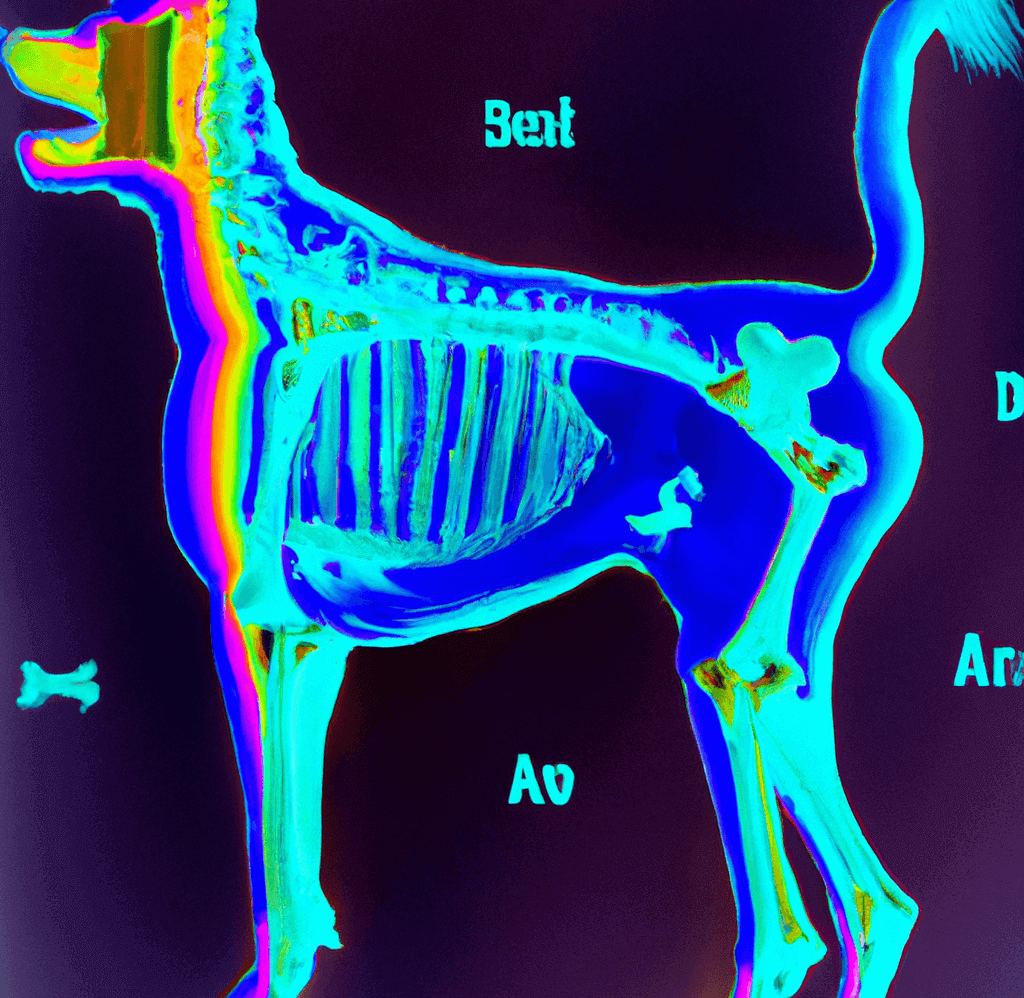Physical Address
304 North Cardinal St.
Dorchester Center, MA 02124
Physical Address
304 North Cardinal St.
Dorchester Center, MA 02124

As dog owners and lovers, it is essential to have a basic understanding of our furry friend’s anatomy, including the number of bones in their body. Knowing about a dog’s bone structure can provide insight into their movement and behavior, and help us identify any potential health concerns. In this article, we will be exploring the topic of “how many bones does a dog have” and delving deeper into the subject of canine skeletal anatomy.
Dogs have a complex skeletal system, consisting of around 319 bones on average. These bones provide support and stability for the body, protect vital organs and aid in movement. The number of bones can vary among different breeds, with larger breeds having more to support their weight. Understanding a dog’s bone structure can provide insight into their behavior and help identify any potential health concerns. As a responsible dog owner, it is important to be knowledgeable about our furry friend’s anatomy in order to provide proper care and support.
A dog’s skeleton is similar to that of a human, but there are a few key differences in terms of the number of bones. On average, an adult dog has around 319 bones, while the human skeleton consists of 206 bones. These differences can be attributed to the variations in body shape and size between the two species.
It’s also worth noting that there can be variations in the number of bones among different breeds of dogs. For example, small breeds such as Chihuahuas typically have fewer bones than large breeds like Great Danes. This is because larger dogs have longer and heavier bones to support their weight.
The axial skeleton is the central core of the dog’s skeletal system, and it includes the skull, spine, and ribcage. The skull is made up of several bones, including the cranium, which encloses the brain, and the jawbone. The skull plays a critical role in protecting the brain and the sense organs such as the eyes, ears, and nose.
The spine, also known as the backbone, consists of 33 vertebrae that provide support and stability for the dog’s body. It also serves as a pathway for the spinal cord, which is the primary communication pathway between the brain and the rest of the body.
The ribcage is composed of the sternum, or breastbone, and the ribs. It provides support and protection for the dog’s heart and lungs.
The appendicular skeleton includes the limbs and the bones they are connected to. The forelimbs or front legs of the dog consist of the scapula, humerus, radius, and ulna. These bones work together to allow the dog to move their front legs and shoulders.
The hindlimbs or rear legs of the dog are made up of the pelvis, femur, tibia, and fibula. These bones provide the power and drive for the dog’s movements, allowing them to walk, run, and jump.
The bones in a dog’s bodywork in concert with the joints and muscles to provide movement and support. The joints, such as the shoulder and hip joints, allow for a wide range of motion, while the muscles provide the power and force needed for movement. A dog’s skeletal system is designed to withstand a lot of stress, but it is important to provide proper care and exercise to keep the bones healthy and strong.
Bones continue to develop and change throughout a dog’s life, just as they do in humans. Puppies and young dogs have more cartilage and fewer bones than adult dogs, and as they grow and mature, the cartilage is replaced by bone. As dogs age, their bones can become more fragile and prone to injury. It is crucial to provide proper care for senior dogs to help maintain their bone health. This includes regular exercise, a balanced diet, and regular visits to the vet for checkups.
To summarize, we have discussed the importance of understanding a dog’s bone structure, the average number of bones in a dog’s body, and variations among different dog breeds. We have also explored the different parts of the dog’s skeleton, including the axial and appendicular skeleton, and the role of bones in a dog’s movement and health.
For those interested in learning more about dog anatomy, there are many resources available, including books and websites. Consult with veterinarians or even take classes specifically designed to teach dog anatomy. It is important to have knowledge about our furry friends’ bodies so we can properly take care of them and understand them better.
In conclusion, understanding the number of bones in a dog’s body and how they fit together to make up the skeleton is an important aspect of being a responsible dog owner. It can provide insight into a dog’s behavior and movements and help identify any potential health issues. With the information provided in this article, you will have a better understanding of “how many bones does a dog have” and be better equipped to care for your canine companion.